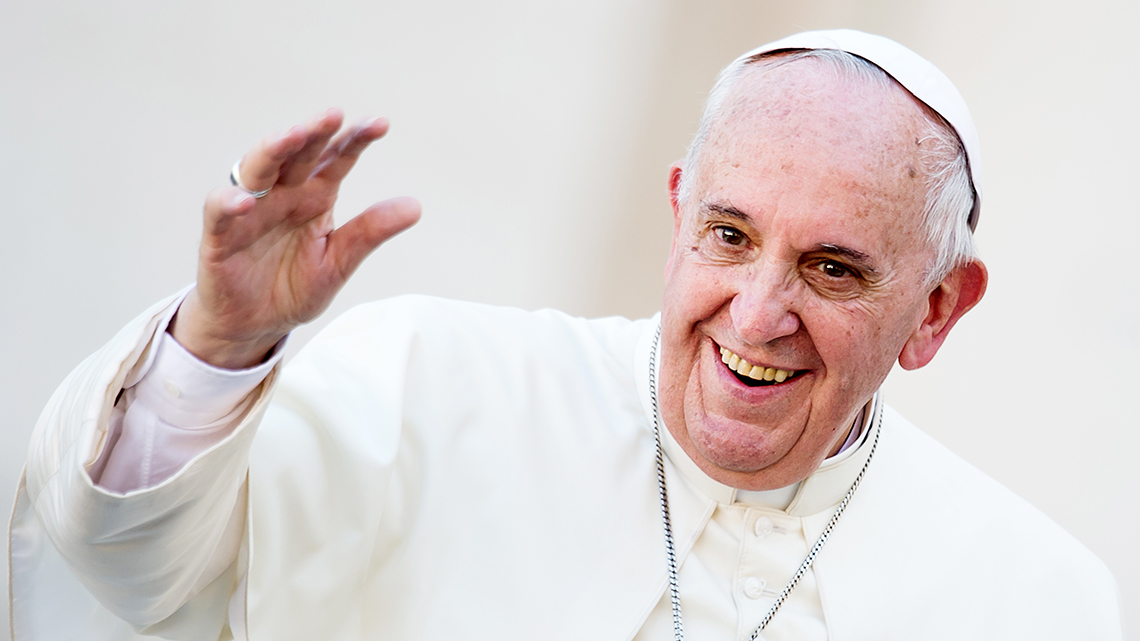Pope Francis | Vatican Media
Today, 13 March, marks ten years since Pope Francis took over as the Pope. In that time, he has made a huge impact on the Church, leading his flock with a pastoral zeal that has been felt across the globe.
To commemorate this milestone, we are looking back at ten defining moments of Pope Francis’ papacy.
A historic election
Pope Francis’ election, which was a surprise to many Vatican commentators, was an election of many firsts. Pope Francis was the first Jesuit pope, the first pope from South America, the first pope from the Global South, and the first pope to take the name of Francis.
He started off as he meant to carry on: making history.
Elevation of Cardinal Nichols
From the perspective of the Catholic Church in England and Wales, one of the key moments of Pope Francis’ pontificate was when he elevated Archbishop Vincent Nichols to the rank of Cardinal at a general consistory on 22 February 2014.
Evangelii Gaudium
The 2013 apostolic exhortation, “The Joy of the Gospel” saw Francis invite the Church “to embark on a new chapter of evangelism”, to become a community of disciples “permanently in a state of mission”. Francis set out many of the goals of his pontificate, saying he was aiming “at overcoming complacency at every level of the Church’s hierarchy and in the life of every Christian”, while calling for an “ecclesial renewal which cannot be deferred”.
Visit to Lampedusa
On the first pastoral visit of his papacy, Pope Francis visited Lampedusa, a tiny island off the coast of Sicily which is the first point of entry to Europe for hundreds of thousands of refugees and migrants. Francis criticised the “global indifference” to the refugee crisis, saying “we have fallen into the hypocritical attitude of the priest and of the servant of the altar that Jesus speaks about in the parable of the Good Samaritan”.
Meeting Ecumenical Patriarch Bartholomew
In May 2014, in Jerusalem, Francis met the spiritual leader of the Orthodox world and signed a joint declaration aimed at overcoming obstacles between the churches. They commemorated the 50th anniversary of the 1964 meeting of the churches which had been the first since the 15th century.
Year of Mercy
The Extraordinary Jubilee of Mercy lasted from 8 December 2015 to 20 November 2016, with churches around the world each designated a holy door to act as a reminder of Francis’ call for forgiveness. On a monthly basis, he did merciful things such as visiting former prostitutes and inviting prisoners and their families to Mass.
Laudato Si
The second encyclical from Pope Francis officially added teaching on the environment to Catholic Social Teaching. Pope Francis criticised the effects of climate change on the poor, drawing on church tradition and Scripture to argue that protection of the environment should be a key tenet of the Catholic mission.
More women in the Vatican
When Pope Francis took over, there were 846 women working for the Pope. Now, there are 1,165 female employees. In all, there are today 23.4% women working in the Vatican, whereas before there was 19.2%.
“Throwaway culture”
One of Francis’ defining themes is the idea of the culture of today discarding people who are not economically viable. He sees euthanasia, mistreatment of the elderly, and abortion as part of this culture. Speaking to the European Parliament in November 2014 he said: “Whenever a human life no longer proves useful for that machine, it is discarded with few qualms, as in the case of the terminally ill, the elderly who are abandoned and uncared for, and children who are killed in the womb.”
Starting the Synod
Pope Francis opened the synod over the weekend of 9th-10th October 2021, building up to a synod of the bishops in Rome in 2024, giving the Church the chance to listen to the concerns of the laity. The synod is not intended to be a democratic debate, but rather an opportunity to embed at all levels of the Church a new way of listening and hearing, of discernment and action which remains faithful to the truths received but expresses them in the context of a particular time.
Source: CBCEW

